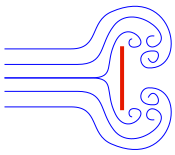jstaashaught
Member
- Joined
- Jan 19, 2016
- Messages
- 6
- Reaction score
- 0
I just picked up a Warlock at LDRS today and am looking forward to the build.
Did you add any nose weight?
Would you mind sharing your RS or OR sim file so I can see what the zero-mass cone looks like?
I'd love to build this thing stock if possible.
I did the Minie Magg a few months ago and added about a pound a half to the nose. Now I'm wondering if that was even necessary.
Did you add any nose weight?
Would you mind sharing your RS or OR sim file so I can see what the zero-mass cone looks like?
I'd love to build this thing stock if possible.
I did the Minie Magg a few months ago and added about a pound a half to the nose. Now I'm wondering if that was even necessary.





